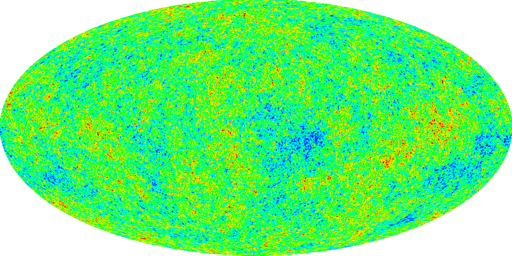- Picture 1 shows the Planck CMB radiation observation of 21 March 2013
- Picture 2 shows a CMB radiation simulation of 21 March 2013 with large and small bubbles.
- Picture 3 shows a CMB radiation simulation with only small bubbles.

|
|
|
|
|
- Picture #1 Average temperature = -44.10 spread = 148.03
- Picture #2 Average temperature = -42.37 Spread = 148.44
- Picture #3 Average temperature = -44.27 Spread = 130.38
The simulation is performed by two types of hills and valleys (bubbles): large one's and small one's.
- The large one have an average radius of 30 pixels (small l values)
- The small one's have a radius of 1 pixel (large l values)
The radius of the sphere of the simulation is 256 pixels. The radius of Picture #1,#2 and #3 is 128 pixels.
When you compare the picture #1 with picture #2 they are rather identical. The most important difference that Picture #2 does not contain any information about the physical state of the Universe.
Picture #3 shows only the small hills and valleys. This picture is important because in order to calculate the cosmological parameters only the large l values are used.
See also . Reflection part 2
To observe the Power Spectrum based on Plank data, the Bubble Universe and WMAP data accordingly to the methode described at page 242 in the book "The Inflationary Universe" select this link: Critical evaluation of Power Spectrum calculation in the book "The Inflationary Universe" by Alan H. Guth

